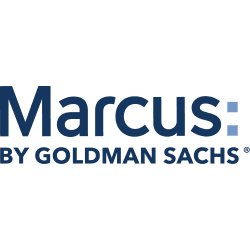
Open an account in less than 5 minutes, then track it from your phone. Plus explore a range of features like round-ups, auto-saving, pots, goals and more.

Is my money safe?
The Financial Services Compensation Scheme (FSCS) guarantees that it will step in to compensate the first £85,000 (£170,000 for a joint account) you have saved with a UK-authorised bank, building society or credit union in the event that the business goes bust.
Compare savings accounts
There are a lot of savings accounts available out there, so to make the comparison a bit easier, you first want to decide which type of account is best for you. This will largely depend on whether you want ready access to your money, or whether you’re comfortable tying up your cash for a length of time.
If you have never signed up to a savings account before and would like to know how, then we have a guide on opening a new savings account.
Why should I compare savings accounts?
Chances are that if you’re on this page you know this already, but choosing the right savings account can make a significant difference for your finances. Using a top-paying savings account, could leave you much better off than if you left your money in a lacklustre account.
There can be a big difference between top paying accounts and those at the bottom of the league table. The more you build up your savings, the more difference it’ll make. Say you have £2,500 set aside. With 1.5% annual interest, it’ll earn you £37.50 after a year. With 4% interest though, you’ll get £100. The difference between a pub lunch for two at the local Spoons and a nice dinner in a fancy restaurant. Just saying.
The other important thing to keep in mind is that there are different types of savings accounts with different features that fit different saving profiles. Someone who has built up a large pot of savings might be able to afford tying up some of their cash for a year or two, whereas someone with a smaller pot of savings might be better off with an account that gives them immediate access to their money if they need it.
But you don’t have to choose between one or the other because you could split your savings into multiple accounts, each with its own purpose.
So you should compare accounts, rates and features to find the best savings account for you. Learn more about the best places and type of accounts to save money.
How do I compare savings accounts?
Savings accounts aren’t the most complicated products in the personal finance world, so the list of their most relevant features is fairly short:
- Access. This is probably the first decision you need to make. Are you okay with your savings being locked away for a certain period of time? What if there’s an emergency? There are instant access savings accounts where you can withdraw the money with no notice needed to be made to your bank or building society. In contrast there are fixed-rate savings accounts where you can earn a higher interest rate but need to keep the money in the account for a fixed period of time.
- Interest rate. This is one of the most important factors to consider. Just be aware that, depending on how much you can deposit into the account and when, higher interest rates don’t always come with higher overall returns. You can browse savings accounts sorted by interest rate here.
- Minimum and maximum deposit. Some top-paying savings accounts either have a high minimum deposit (so most small savers can’t get them) or a fairly low maximum deposit (great for small savers but you’ll still need a different solution for the rest of your savings if you have more).
- Time limit/introductory rate. Many savings accounts (particularly fixed rate bonds and regular savings accounts) expire after a certain period of time. Make sure you’re aware of what happens to your savings next. Also, if you find a really great rate somewhere, chances are it will only last for one year or so. More on this below.
- Overall earnings. Okay, this isn’t exactly a feature, but it’s an easy way to compare deals when things get complicated. Think of how much money you want to put into your new account, figure out how much it’ll earn you and compare different deals to find out which the most lucrative is.

"It may seem a daunting task to switch savings accounts. But by not doing so, you could be losing out on hundreds – maybe even thousands – of pounds in interest each year.
When inflation is high, the value of your savings becomes less in real terms. Essentially, what you can buy with the money sitting in your savings account now, is less than what you could buy a year ago. That’s why it’s important to earn as much interest as you can to minimise the effect of inflation on your savings.
While there may not be a switching service like there is for current accounts, it’s still easy to switch savings accounts. The first step is to compare the best rates available for your chosen type of savings account.
The next step is to check if the provider is protected by the Financial Services Compensation Scheme (FSCS). This means that your deposits are protected up to £85,000 (£170,000 for joint accounts). So if the provider were to go bust, you could get your savings back. One thing to be aware of though, if you have multiple accounts with one banking group, these all contribute towards the £85,000 limit. You can check whether a provider has FSCS protection by looking for the logo in our comparison tables.
If you’re worried about sending a large amount of money at once, you can start by sending a small amount – say £1 – to check it arrives safely. Then you can transfer across your remaining savings balance. However, make sure to check your new savings account allows multiple deposits – some fixed-rate accounts won’t allow you to make further additions.
Finally, if you’re worried about not being able to access your savings, then it’s probably best to go for an instant access or easy access account. You may get higher rates with a fixed-rate bond, but your money will be locked away for the duration of the term and you won’t be able to access it."
An overview of our savings comparison
| Savings account types include | Easy access, cash ISAs, fixed-rate bonds, notice accounts, regular savers |
|---|---|
| Number of accounts | 1875 |
| Opening options | Branch, website, mobile app, post, telephone |
| Best easy access rate | 7.29% |
| Best cash ISA rate | 5.17% |
| Fixed cash ISA terms | 6 months - 7 years |
| Best fixed-rate bond rate | 4.96% |
| Fixed bond terms | 1 month - 7 years |
| Best notice account rate | 5.2% |
| Notice account periods available | 7 days - 195 days |
| Best regular saver rate | 8% |
Savings accounts vs inflation
If you read personal finance news, you may have previously heard about savings accounts that “beat” inflation.
That’s because if you keep your savings in an account that pays less than the inflation rate, your money will be worth less and less every year. Inflation causes goods to become increasingly more expensive, which means that, with the same amount of money, you can buy less.
If you stash your savings under the mattress long enough, they’ll lose most of their value – just ask your grandmother how much it was for a loaf of bread fifty years ago.
An interest-paying savings account can partially prevent that, but unless the rate beats the inflation, you’re still losing purchasing power and, by extension, money, even if it may not look like it.
Setting up a savings strategy
Avoiding spending is certainly the hardest part of saving, but deciding where to keep the money you’ve industriously put aside isn’t all fun and games either. Here’s some advice on how to approach the problem:
- Pick your current account first. High-interest current accounts aren’t common, good rates are typically only available for short periods of time. Still, if you can bag a decent one, you should. Introductory rates are sometimes really great and you’ll always get access to your money.
- Emergency-proof your strategy. Whether you keep it in a current account or in an easy access savings account, make sure that if something happens, you’ve got a decent sum immediately available to take care of emergencies. Learn more about budgeting and saving in an emergency.
- Set up a regular saver for your monthly savings. Regular savings accounts tend to offer great rates, so if you save part of your income every month, you should open one. You can set up a standing order and forget about it, which will also eliminate the temptation of spending the money. However, be careful, because many regular savings accounts don’t allow you to withdraw your money once you’ve deposited it.
- Plan for the long term too. After the first year or two of saving regularly, you’ll have enough to start thinking about your medium to long term strategy. You have many different options that mostly depend on what you’re planning to do with the money. For example, if you know for sure you either want to buy a house or save for retirement, a lifetime ISA offers good returns thanks to government contributions. Alternatively, if you’d like to keep your options more open, you may want to consider a fixed rate bond.
- Investing is an option. Investing your savings is way riskier than depositing them in a savings account and it isn’t for everyone. However, it’s also become much easier than it used to be, even for complete beginners. If it’s something you may want to consider at some point, you can read our guides on share trading and on stocks and shares ISAs.
What are introductory bonus rates?
Something to look out for when browsing savings accounts is high interest rates for new customers, often referred to as “introductory bonus rates”. While this is definitely an alluring feature, remember that when the introductory period is up you’re likely to be left with a significantly lower interest rate. Because of this, it may be a good idea to keep your account open while you qualify for the introductory rate, before switching to an account with a better rate once the introductory period is finished.
If you decide to go with an account offering an introductory bonus rate, make sure you’re clear on the terms so you don’t end up losing the rate. For example, if you withdraw money before the end of the introductory period the introductory rate may be withdrawn.
Are savings taxed?
A taxpayer who pays the basic rate of income tax can earn up to a maximum of £1,000 from interest payments on a savings account without paying tax, while a higher rate taxpayer can earn up to £500 before paying tax. This is what’s known as the Personal Savings Allowance. Additional rate taxpayers don’t get an allowance at all.
The Personal Savings Allowance is in addition to money earned from an ISA account, which is all tax-free.
What is the FSCS?
Short for Financial Services Compensation Scheme, the FSCS protects customers when financial services fail. Look out for its logo on the financial products you’re comparing. If your money is in a bank – an institution that holds a banking licence – then up to £85,000 is protected by the scheme if the bank goes bust. However, if you had more than £85,000 across two banks in the same group – such as HSBC and First Direct – then only £85,000 is protected. Find out more about banking brands that share the same FSCS protection.
Since 2001, the FSCS has helped millions of UK customers, paying out billions of pounds. If a firm has stopped trading or does not have enough assets to pay up, the FSCS will step in.
Best banks for savings customer satisfaction in 2024
In 2024, we published our customer satisfaction survey on savings accounts in England, Scotland, Wales and Northern Ireland. Here’s the full list of providers we considered and how many of their customers said they would recommend them to a friend. Learn more about the results and the winners.
| Brand | Logo | Overall satisfaction | Customers who’d recommend | Review | |
|---|---|---|---|---|---|
| Marcus |  | ★★★★★ | 100% | Marcus by Goldman Sachs’ customers were impressed with its “ease of use” and competitive rates, the combination of which saw it score 4.9 out of 5 and an impressive would recommend score of 100%. | Read our review |
| AA Savings |  | ★★★★★ | 97% | Better known for its breakdown and insurance services, AA Savings offers a good range of savings accounts. Customers praised its “straightforward” application process and “friendly customer service”, all of which contributed to its score of 4.9 out of 5. | Read our review |
| Virgin Money |  | ★★★★★ | 95% | Virgin Money’s has a good variety of savings accounts available to new customers, as well as exclusive accounts linked to its current account. It scored 4.6 out of 5 and 95% of its customers would recommend it to a friend. | Read our review |
| Nationwide |  | ★★★★★ | 94% | Not far behind Virgin Money, Nationwide also scored 4.6 out of 5. It offers its members exclusive savings accounts. Our survey found that customer’s recommended Nationwide for its “friendly” customer service and competitive interest rates. | Read our review |
| Yorkshire Building Society |  | ★★★★★ | 93% | With Yorkshire Building Society, you can choose from a range of savings accounts including regular savers. The building society also has a series of savings pledges that look to support members by letting them know of new deals first. It also scored 4.6 out of 5. | Read our review |
| Santander |  | ★★★★★ | 90% | High-street bank Santander comes with all the advantages of a big bank and offers a wide range of savings accounts. Customers particularly liked how easy it was to use and its decent rates of interest, scoring it 4.6 out of 5. | Visit Santander |
| Halifax |  | ★★★★★ | 93% | Part of the wider Lloyds Banking Group, Halifax has several savings options, ranging from easy access accounts to fixed term savings. Customers in our survey higlighted its quick set up and ease of use, leading to a score of 4.3 out of 5. | Read our review |
| NatWest |  | ★★★★★ | 88% | NatWest has savings accounts for every financial need. Its products range from regular savers, fixed rate ISAs to children’s savings accounts. It clear the bank promotes long-term loyalty, with some customers having held an account with the bank for multiple years. It scored 4.3 out of 5. | Read our review |
| Barclays |  | ★★★★★ | 85% | Savings accounts by Barclays come recommended by 85% of its customers in our survey and scored 4.3 out of 5. Respondents highlighted its good customer service and decent interest rates. | Read our review |
| HSBC |  | ★★★★★ | 93% | HSBC has lots of different savings accounts on its roster. Like other banks, there are accounts that have exclusive rates for its current account customers. It scored 4.1 out of 5, but achieved a would recommend score of 93%. | Read our review |
| Post Office |  | ★★★★★ | 89% | Post Office offers both online and brand-based savings products, which makes it popular with customers who like it for its good customer service and “trustworthiness”. It posted a “would recommend” score of 89% and a final score of 4 out of 5. | Read our review |
| Tesco Money |  | ★★★★★ | 80% | The financial arm of the supermarket, Tesco Bank has a range of different savings accounts including a good variety of fixed term savers. Respondents liked its “good” customer service and ease of use, resulting in its score of 3.8 out of 5. | Read our review |
Customer satisfaction scores methodology
In December 2023, we ran a customer satisfaction survey on savings accounts. 750 people answered and told us how happy (or not) they were with their savings provider.
The survey asked respondents how satisfied they were with their savings account on a scale from 1 to 5, and also whether they would recommend their savings providers to a friend or not. We turned the results into star ratings and shortlisted the top-performing brands for our awards. Where there was a draw in terms of star ratings, we used the recommendation score (the percentage of customers who said they would recommend the brand to a friend) as a tie-breaker.
Savings scores
The customer satisfaction score is based on a survey of 750 customers carried out in December 2023.
Frequently asked questions
Read more on this topic
-
Sidekick review: A banking app that wants to empower you to grow your wealth
Sidekick is a money management app with the aim of unlocking investment opportunities for everyone that are usually reserved for the ultra-wealthy.
-
Finder People’s Choice Awards 2024: Savings Provider
Welcome to the 2024 People’s Choice Awards for savings. Vote for your favourite investing provider and sign up for the chance to win £500!
-
Fixed-rate ISA calculator: Should you switch to a better rate?
Our fixed-rate ISA calculator estimates whether paying the get-out penalty on your ISA is worth it to open a new one at a better rate.
-
Working from home statistics: How many people work from home?
Our research found that 41% of Brits work from home at least some of the time as of September 2024. We look at who is working from home and how working from home affects productivity.
-
What is the average savings interest rate in the UK?
High inflation could be making your savings accounts lose value in “real terms”. We look at historical savings versus inflation rates.
-
Savings statistics: Average UK savings in 2024
Our 2024 savings statistics show the average person in the UK has £11,185 in savings but 1 in 6 Brits (16%) have no savings at all.
-
Compare the best savings accounts for charities
Find out more about savings accounts for charities. Rates updated daily.
-
Chase Saver account review
Find out whether the Chase Saver account is the best place for your savings.
-
Paying tax on interest from a savings account
If you earn interest from a savings account, you need to pay tax on that interest at the same rate as the rest of your annual taxable income.
-
Is it safe to use a debit card online in the UK?
It’s a straightforward and convenient process, but paying with a credit card may be safer.


Hi there!
Is it possible to track down a 45-year-old National Savings Bank Ordinary account? I’ve found the original deposit/ demand book!
I’m not sure if it still has a deposit within?
Hi Neil,
Thanks for getting in touch with Finder. I hope all is well with you. 😃
Yes, it is possible to track down your account. The first thing you need to do is to get in touch with your bank. Be sure to have your account details at hand so you can quickly present it to the bank.
I hope this helps. Should you have further questions, please don’t hesitate to reach us out again.
Have a wonderful day!
Cheers,
Joshua
Hi I am looking for a trustworthy bank in UK or abroad to deposit £350,000 approximately – can you recommend any and what sort of interest I can expect for such a large amount? NB I am planning to retire in the Philppines so will need access to my money easily.
Hi Philip,
Thanks for getting in touch with finder. I hope all is well with you. :)
We currently don’t have a list of overseas bank accounts. What we have is a list of savings account that you will find on this page. Since we can’t make specific recommendations, you can use our comparison table to see which bank account is the right for you. In the fourth column, you would see the interest rate of each bank account. By using our table, you can get an idea of how much your money will grow according to the interest rate. Once you find the right account, you may then click on the “Go to site” or “More info” green button to be redirected to your chosen bank’s website.
I hope this helps. Should you have further questions, please don’t hesitate to reach us out again.
Have a wonderful day!
Cheers,
Joshua
Hi I’ll like to open saving account. How do I apply please
Thanks
Reply
Hi Hana,
Thanks for your inquiry
You can compare saving account on the page above and once you have chosen one, you may click the ‘go to site’ button to proceed to the application process. You may also click the more info button for more details or you may contact them directly.
Hope this information helps
Cheers,
Arnold
I have £150000 to invest as a lump sum. What interest rate might I expect
And what might it earn and would it be compounded pa
Thank you
Hi Bobcharters,
Thank you for your inquiry.
The possible interest rate that may apply to your savings or investment of £150,000 would depend on the account you get and the term of your investment. This varies between banks. If you’ve already chosen a savings account from the list above, best to click on the ‘Go to site’ button so you’d be redirected to the bank’s main page and you will find out the interest rates they have for a certain amount of investment. You can also contact them directly to get more details on interest rates.
Cheers,
May